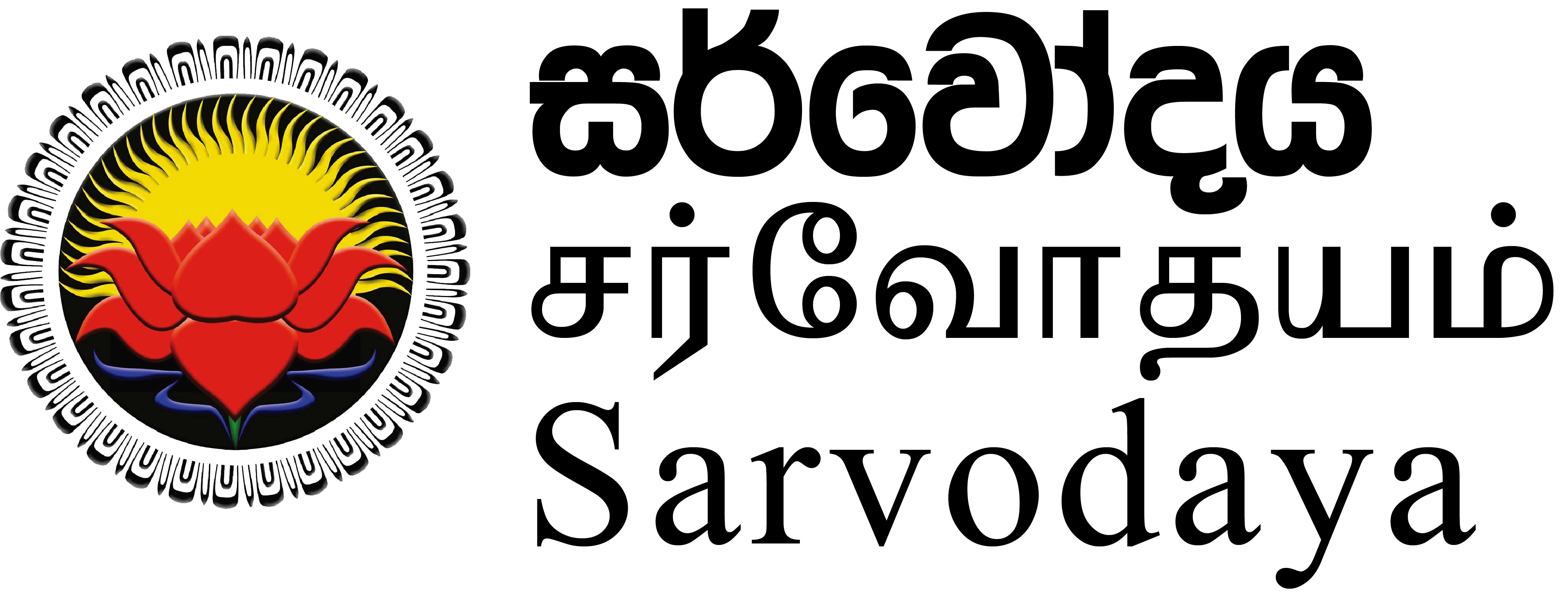During the last week of March Sarvodaya founder A.T. Ariyaratne joined local leaders and others in the ceremonial laying of foundation stones for housing projects in Ampara and Batticaloa districts. Rick Brooks has submitted a detailed account of those visits, which included traditional memorials in Hindu kovils, speeches in Tamil and Muslim refugee camps. Below are A.T. Ariyaratne’s thoughts:
Three Months After the Tsunami
We Lay the Foundations for the Future Amidst our Roots in the Past
Now three months after what the world has known as one of the greatest natural disasters in modern times we are asked to take stock. Our Sarvodaya family from around the world has joined hands with us to alleviate the suffering of fellow human beings and nature alike. We are humbled by the tasks ahead of us.
Those who visit Sarvodaya headquarters even now can see the debris of the continuing waves of compassion and generosity. What they rarely see are the frustrations and enduring emotional blankness of families sitting idle in the hot sun of refugee camps.
We are called upon by necessity to act beyond our previous capacity; to re-think how we use our facilities as well as the momentum which derives from Sarvodaya’s spiritual base and the faith of common people.
To this work we are devoted; not to the fast-moving and competitive business of securing dollars or euros in a competition amongst the well-intentioned and more “professional†managers of foreign aid. It is the trademark of Sarvodaya to “do more with less.†With proper direction, training and support, new leaders emerge at village level. Young people choose to serve rather than to enrich themselves. While the rescues may seem to be ending, the long-term reawakening of the spirit and energies of common people have just begun anew.
Just as in the building of peace we should not wait until the precipice of violence, in the reconstruction of village and community life, Sarvodaya begins with the individual and the family. The tsunami has not interrupted this process. By challenging us to draw upon our best resources—the people we have come to know by name—this disaster has shown us at our best.
In the first days, village people and corporate executives shared the labor of loading lorries and sorting medical supplies. The shramadana for which we are known has taken the form of spontaneous sharing of the energy beyond our previous understanding.
Now in this time of reawakening, however, we look within ourselves to answer the query: from where will come the strength and knowledge required? The experts are asking as well as donors. To this fundamental question the response is inevitably the same as it has been for nearly five decades—from the well of loving kindness, compassion, equanimity, and the joy of sharing.
It is easy to forget the miracles and triumphs of personality and character that saved life after life after the ocean swept across the beaches. Now, in 226 tsunami affected villages and 1,000 villages surrounding them the details are not so easy. Our will is tested by regulation and hesitation, competing priorities and politics.
We are blessed to have the advice and counsel of leaders in the Sri Lankan business community as well as technological and management assistance. To continue to assure transparency and accountability, Sarvodaya is now compiling a detailed database of village resources and needs. We are beginning to use information technology to the utmost, mapping the human and natural resources as well as the plans each village has for the future.
At this juncture, it occurs that perhaps those most deserving of our gratitude and admiration have been properly acknowledged—Sarvodaya workers at village, district and national levels. It was they who took up responsibilities far beyond their “terms of reference†when they saw the full dimensions of this disaster. The truth is, no one was familiar with such an unprecedented situation. For years they have laboured through the civil war to bring peace and a better life to others. As the heart of this Movement, they are often behind the scenes doing the thankless work. For three months now through the incredible stresses of others’ misfortune and seemingly unending demands from all sides, they have responded despite tremendous personal tragedies and exhaustion.
We loaded lorries, delivered food and water, and buried the dead. But we sometimes were too busy to notice that the same people appeared dawn to dusk day after day to do their part.
I ask you to share with me the open acknowledgement of their sacrifices.
The financial requirements for this work are surely great, and we earnestly welcome partners from all parts of the world to share these responsibilities with us. As I often say, however, financial resources will be no match for a young boy or girls in a Sarvodaya community.
The Village to Village program will build relationships between reawakening villages in Sri Lanka and friends who have responded to this disaster with new-found awareness of their brothers and sisters. The results will be homes instead of tents, pre-schools instead of children idle in refugee camps; enterprises arising from the salted earth that will grow fruits and vegetables again.
To each person who reads this I offer the challenge of continuing what we began with the first shramadana camps: be with the people. Sarvodaya has survived decades of adversity by trusting in them.
We welcome all who share in this trust.
Dr.A.T.Ariyaratne, President
